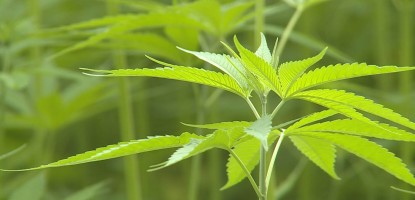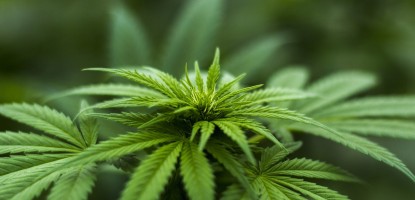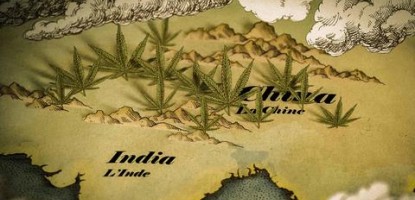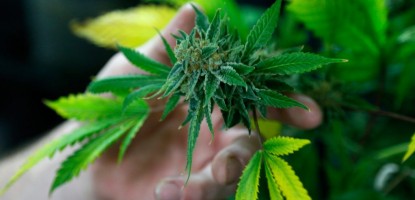Hemp - Origin in India?

Hemp, or industrial hemp, is a botanical class of Cannabis sativa cultivars grown specifically for industrial or medicinal use and has a fascinating and extensive history. Cannabis was first used in the Central region of Asia or West China. For centuries, hemp has been widely utilized for its purported therapeutic benefits. Moreover, Cannabis has been discussed in the literature of the Indian Hindus, Assyria, Greeks, and Roman empires for medicinal purposes.
These literatures claimed that Cannabis could be used to treat a wide range of ailments, such as joint pain, sorrow, menstrual irregularities, inflammatory processes, misery, starvation, and breathing problems. And to your surprise, recent studies also support these purported benefits of cannabis use.
While it has been used for its therapeutic benefits for centuries, Cannabis is strongly associated with Lord Shiva.
According to Hindu mythology, Shiva, the most significant Deity of different factions, was awarded "Lord of Bhang" since weed was his favorite vegetation.
Cannabis has been consumed in India in different ways for centuries. Marijuana (Cannabis) is thought to be one of the five highest sacred plants, as per Vedic literature. It's also thought to be a limitless source of kindness, joy, and liberty.
According to historical Hindus, the medical advantages of Cannabis were justified by appeasing deities like Shiva. According to ancient Hindu literature, the start of fever is attributed to the 'warm breath of the gods,' who were enraged by the sick human's behavior. Cannabis was used in religious practices to appease the gods and lower the temperature.
Lord Shiva was intimately attached to Cannabis, without a doubt. Let us investigate the reasons behind Lord Shiva's Marijuana, Weed, or Cannabis usage. There are two types of stories connected to it.
The First Narrative—SAMUDRA MANTHAN
The Samudra Manthan is linked to Lord Shiva and Bhaang's legend narrative. The Deity (devas) and Demons (rakshas) stirred the ocean along at Samudra Manthan to obtain water of immortality or Amrit. However, one of the by-products of this produced Halahala, a renowned most deadly poison in the World. The halahala's vapors were capable of destroying all demons and deities.
Concerned about the situation, both factions sought assistance from Lord Shiva. Distressed about the danger, he took the poison immediately to prevent the World from shattering. His neck went blue after eating poison. Parvati, his companion, and wife, gave him bhang (Cannabis) to lessen the severity of the toxin.
Following the Samudra Manthan, some stories claim that Lord Shiva relocated to Kailash Mountain near Lake Gosaikunda. The "Bilva Patra" was draped around Lord Shiva's forehead to keep Lord Shiva cool.
Hemp is thought to be a cooling substance since it effectively lowers the body's temperature and decreases the rate of metabolism. A similar can be said for Ganja (Bhaang) and Datura. Lord Shiva is also associated with both Bhaang and Datura.
This is plainly the reason why Lord Shiva is not only associated with Bhaang yet is also regarded as the all-encompassing Lord of Bhaang or Ganja.
The Second Narrative
According to mythology, Lord Shiva used to have a heated arguments with his clan. He wandered off to the smallholding, and he slept under a marijuana plant. He felt starving when he awoke, so he consumed some marijuana. Lord Shiva experienced a short genesis of relaxation and well-being after finishing it. As a result, he adapted to marijuana as his preferred form of luxury.
Marijuana Consumption Is Now Considered Part Of Tradition.
Every year in February, Hindus from Indian states gather in Kathmandu to consume Cannabis in honor of Lord Shiva's rich history. This is done during MahaShivaratri when crowds of Hindus gather outside the Pashupatinath shrine to recite Lord Shiva's praise.
Besides being part of the tradition, Cannabis is widely studied nowadays for its purported health benefits. Scientists are continuously finding promising results about Cannabis, and also they are introducing new cannabis species such as hemp that is not intoxicating yet provides significant health benefits.
The Takeaway?
Countless years have passed since the legend about the wellness and happiness advantages of smoking marijuana growing. Bhang is a therapy for several medical ailments in Vedic scriptures, ranging from seizures to depression. Moreover, scientists are also claiming that CBD and THC, the two main ingredients of Cannabis, can effectively treat these conditions in recent times. Bhang is an indication of success, especially in North India, and a bhang dream is viewed as a prophecy of coming fortune. The origins of these tales are unknown, but they are part of the ever-changing mystique that accompanies cannabis usage in India. Finally, Cannabis is a tangible representation of Shiva's core philosophy: the one who can destroy also has the power to make.






Leave a Comment